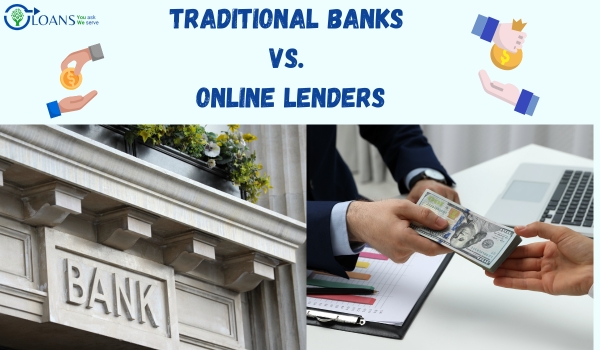
Traditional Banks vs. Online Lenders
Traditional banks offer a wide range of services, including mortgages, personal and commercial loans, investment opportunities, and checking and savings accounts. Traditional banks run through a network of physical branches and are renowned for their dependability and extensive customer service.
Online lenders offer a simplified lending process. They focus on specific financial products such as personal, business, and mortgage loans. Online lenders can lower overhead expenses by not having physical branches, which can result in competitive rates and quicker processing times.
Difference between Online Lenders and Traditional Banks-
- Application Process and Speed:
Traditional banks usually have complicated application procedures that require in-person meetings, lots of paperwork, and extensive approval delays.
Online lenders simplify and improve this procedure. Usually submitted online, applications are approved and funds are disbursed significantly more quickly—sometimes in as little as 24 hours.
- Accessibility and Convenience:
Traditional banks offer customized customer service and in-person encounters. They provide all services, including loans and investment advice, under one roof.
Applications for online loans may be performed at any time and from any location, which makes them a desirable choice for people with busy schedules or those who reside in distant places.
- Interest Rates and Fees:
Traditional banks might offer lower interest rates for well-qualified borrowers due to their established customer base and stable financial standing.
Online lenders often provide competitive rates, especially for those with good credit scores. They also tend to have fewer fees due to lower operational costs.
- Eligibility Criteria:
Traditional banks prioritize customers with good credit histories and higher credit ratings due to their more strict eligibility requirements.
Online lenders specialize in providing loans to borrowers with poorer credit scores. Even their interest rates are higher.
- Customer Service and Support:
Traditional banks provide customer service via a number of channels, such as internet services, phone help, and in-person visits.
Online lenders provide customer service via chat, email, and phone.
Conclusion:
In conclusion, each type of lender—online and traditional banks—has advantages and disadvantages of their own. You can select the lender that most closely matches your objectives by carefully evaluating your priorities and financial status.






